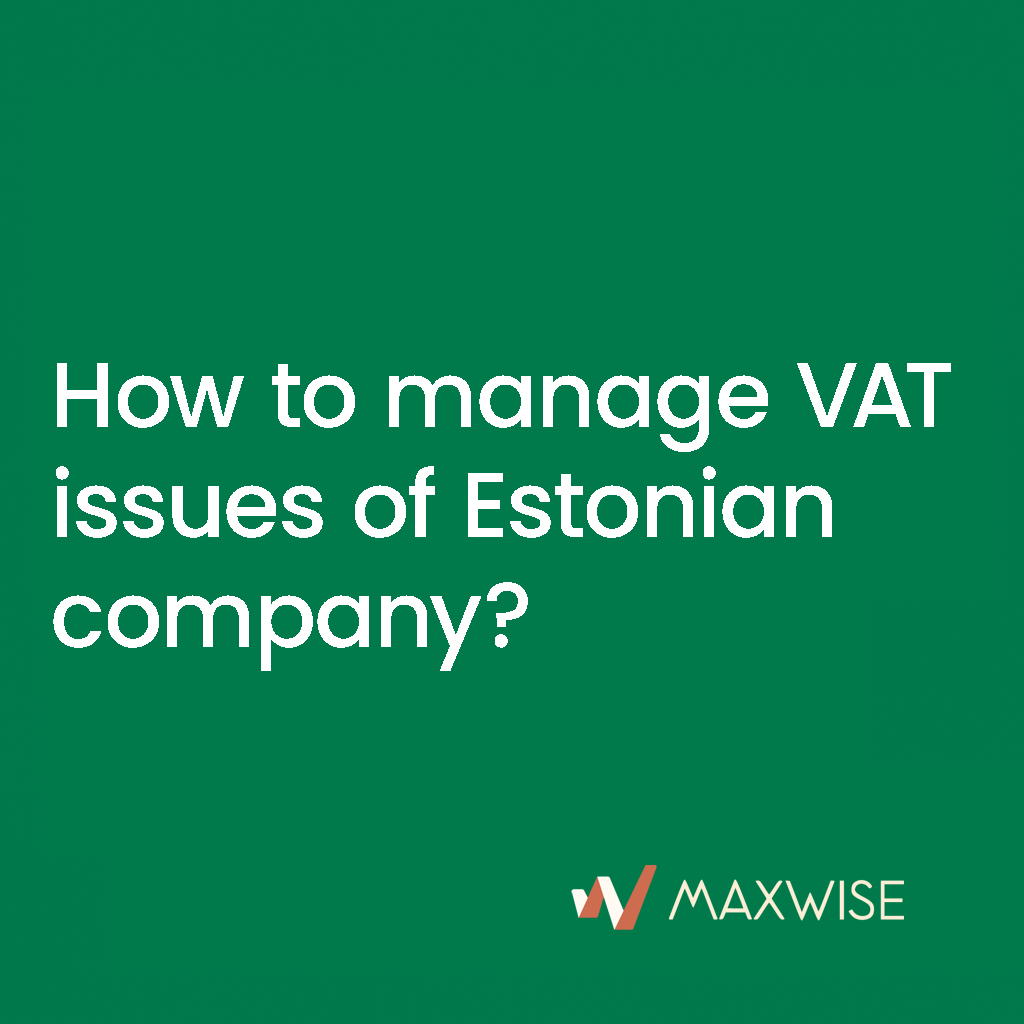Managing VAT (Value Added Tax) for an Estonian company depends on your company’s activities, turnover, and whether you sell goods or services inside or outside the EU. Here’s a structured breakdown:
1. When to Register for VAT
- Threshold in Estonia: If your company’s taxable turnover in Estonia exceeds 40,000 EUR per calendar year, you must register for VAT.
- Voluntary registration: You can also register earlier if you deal with EU partners or want to reclaim input VAT.
- Non-EU trading: If selling digital services to EU consumers (B2C), VAT registration (or OSS scheme) may be required regardless of turnover.
2. VAT Rates in Estonia
- Standard rate: 24% (since July 2025).
- Reduced rates: 9% (books, accommodation, certain medicines, press).
- 0% (zero-rated): Exports outside the EU, certain intra-EU supplies, international transport, etc.
3. VAT Returns & Deadlines
- Declaration frequency: Usually monthly (by the 20th day of the following month).
- Reports are submitted to the Estonian Tax and Customs Board (ETCB) online, using your e-Residency ID.
- Even if there is no VAT activity in a month, you still file a “nil” declaration if registered.
4. Cross-Border Sales
- B2B inside EU: Reverse-charge mechanism often applies (you issue invoice without VAT, customer accounts for VAT in their country).
- B2C inside EU: You may need to use the OSS (One-Stop-Shop) system to declare VAT in multiple EU countries with one return.
- Exports outside EU: Usually 0% VAT, but you must keep proof of export.
5. Bookkeeping & Invoicing Rules
- VAT invoices must include: company details, VAT number, invoice number, date, description, net price, VAT rate, and total.
- All documents must be kept 7 years.
- Accounting must follow Estonian Accounting Act requirements.
6. Common Pitfalls
- Forgetting to register once threshold is exceeded.
- Incorrectly applying VAT rules for digital services or intra-EU sales.
- Missing monthly filing deadlines (can result in fines).
7. Practical Tips
- Use an Estonian accountant or e-Residency service provider (like Maxwise OÜ: Expert
Accounting and Tax Assistant – MAXWISE) — they handle VAT registration, declarations, and compliance. - Consider voluntary VAT registration early if you have EU suppliers (so you can reclaim input VAT).
- Always double-check VAT rules when selling to consumers in multiple EU countries (OSS can simplify reporting).

